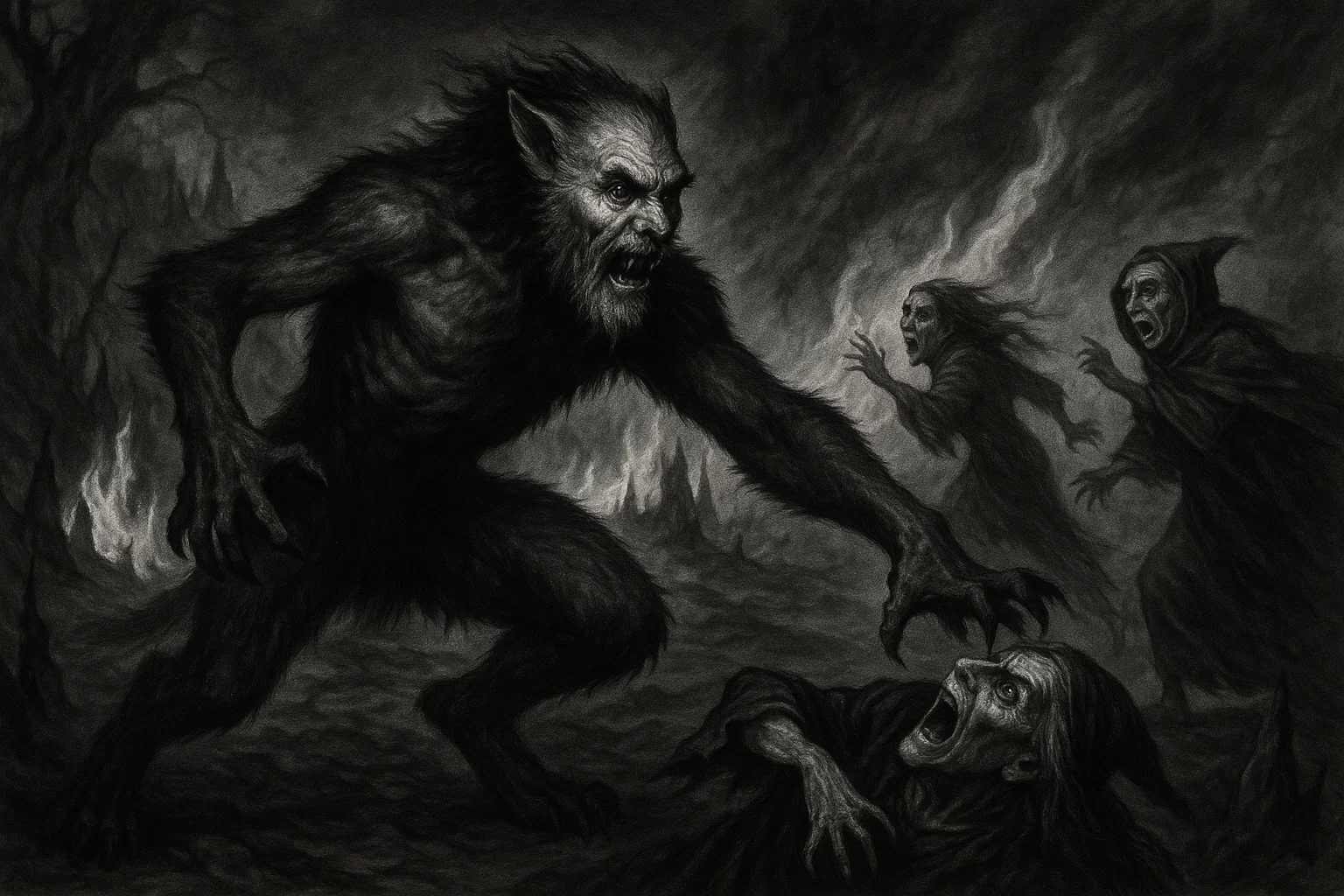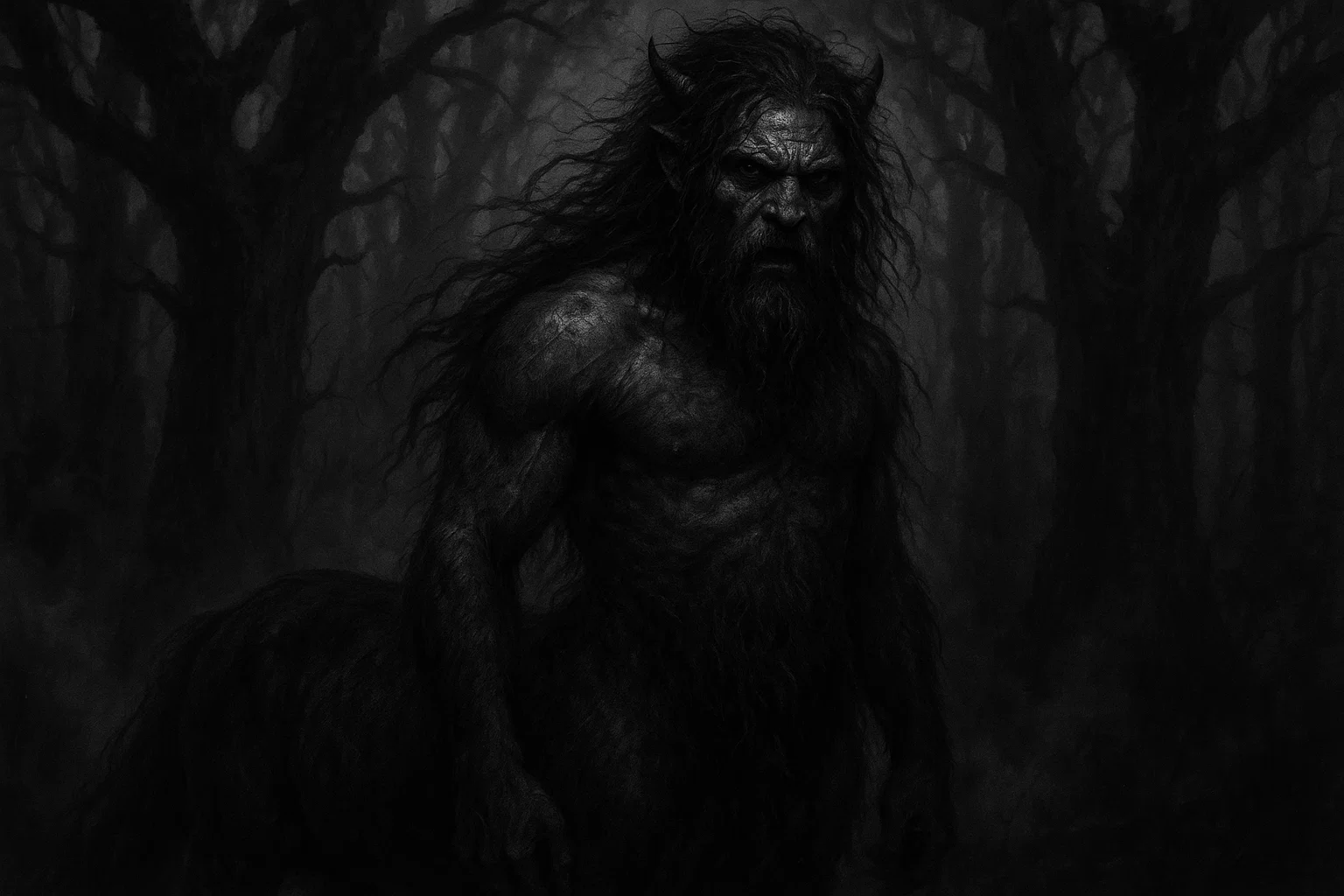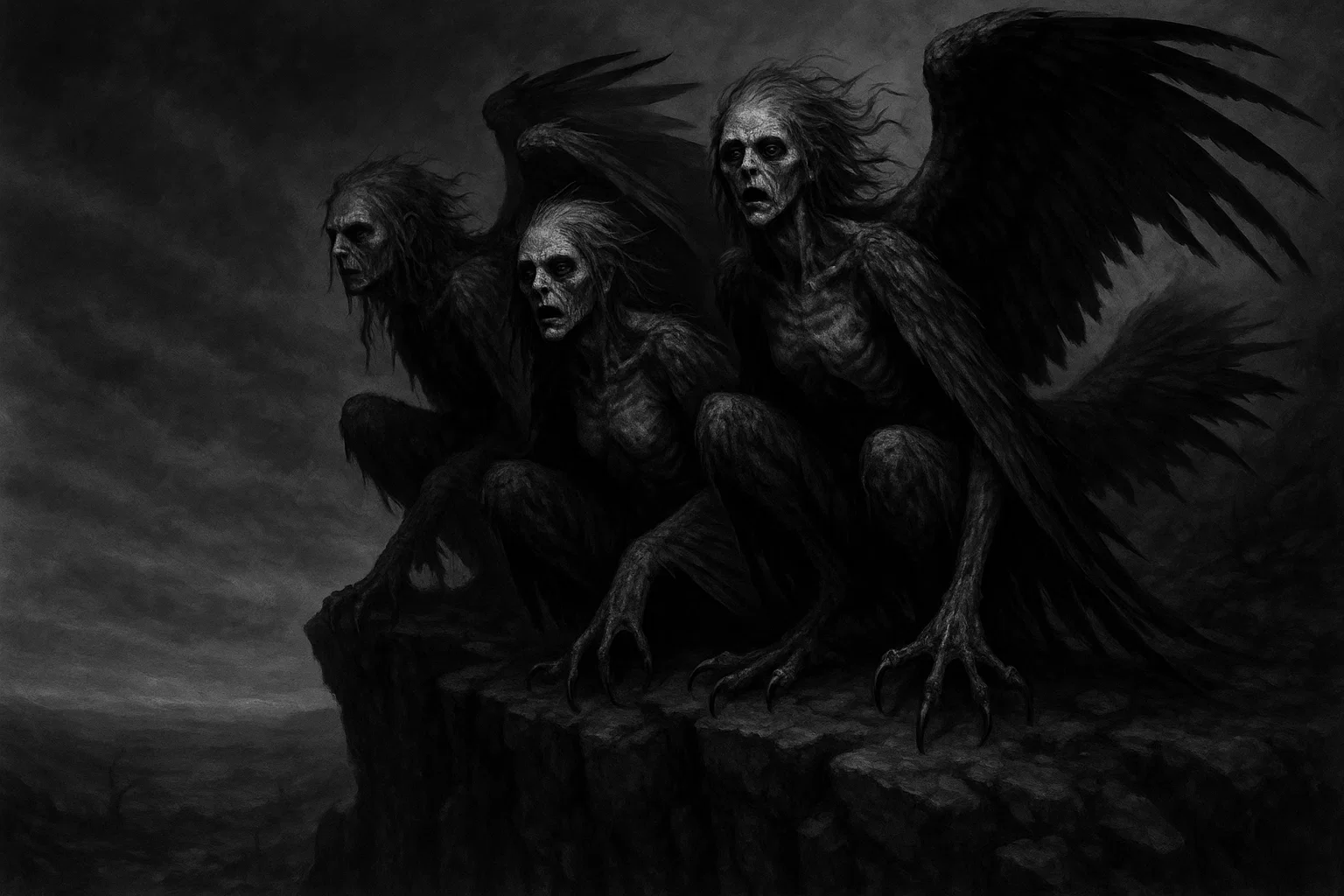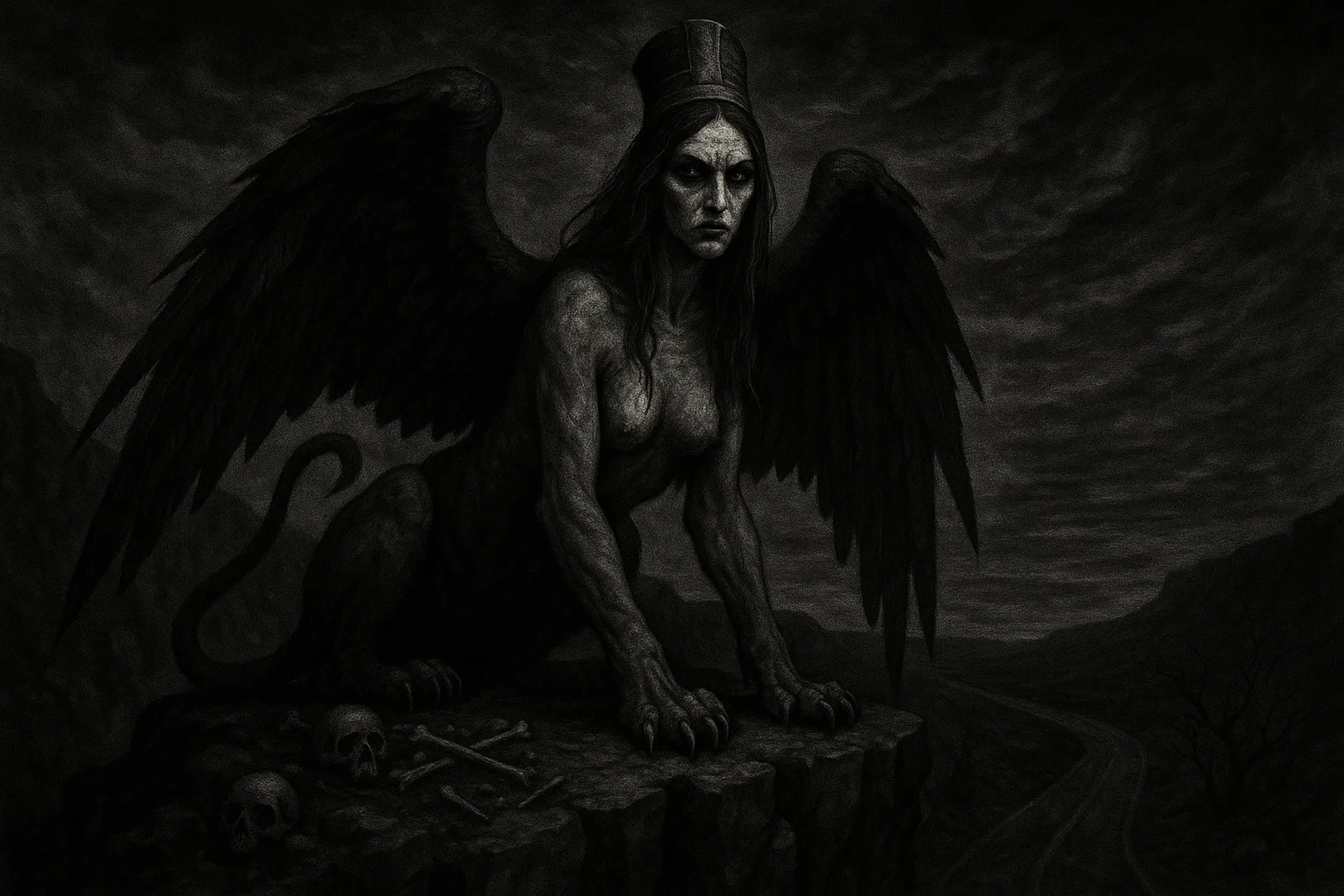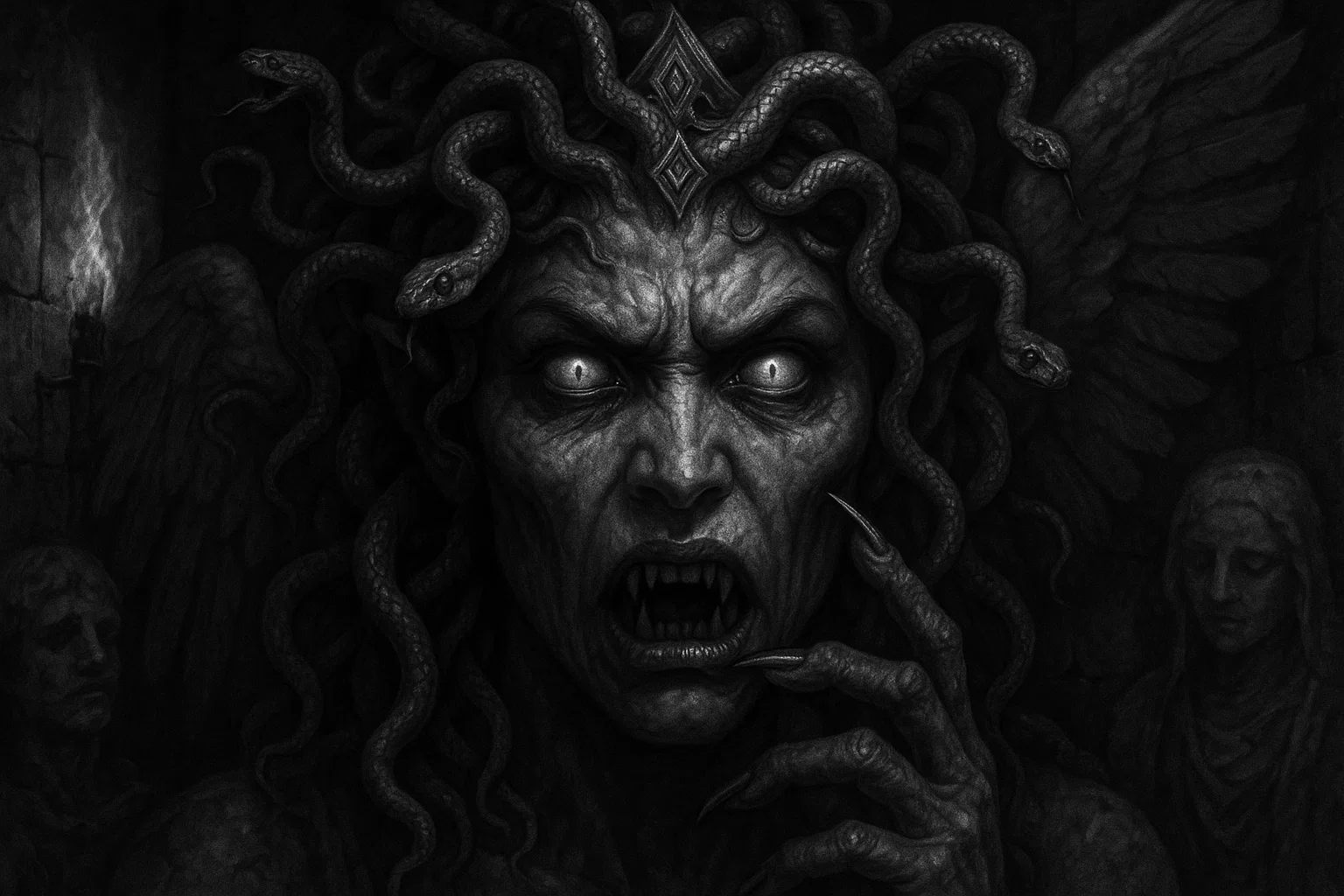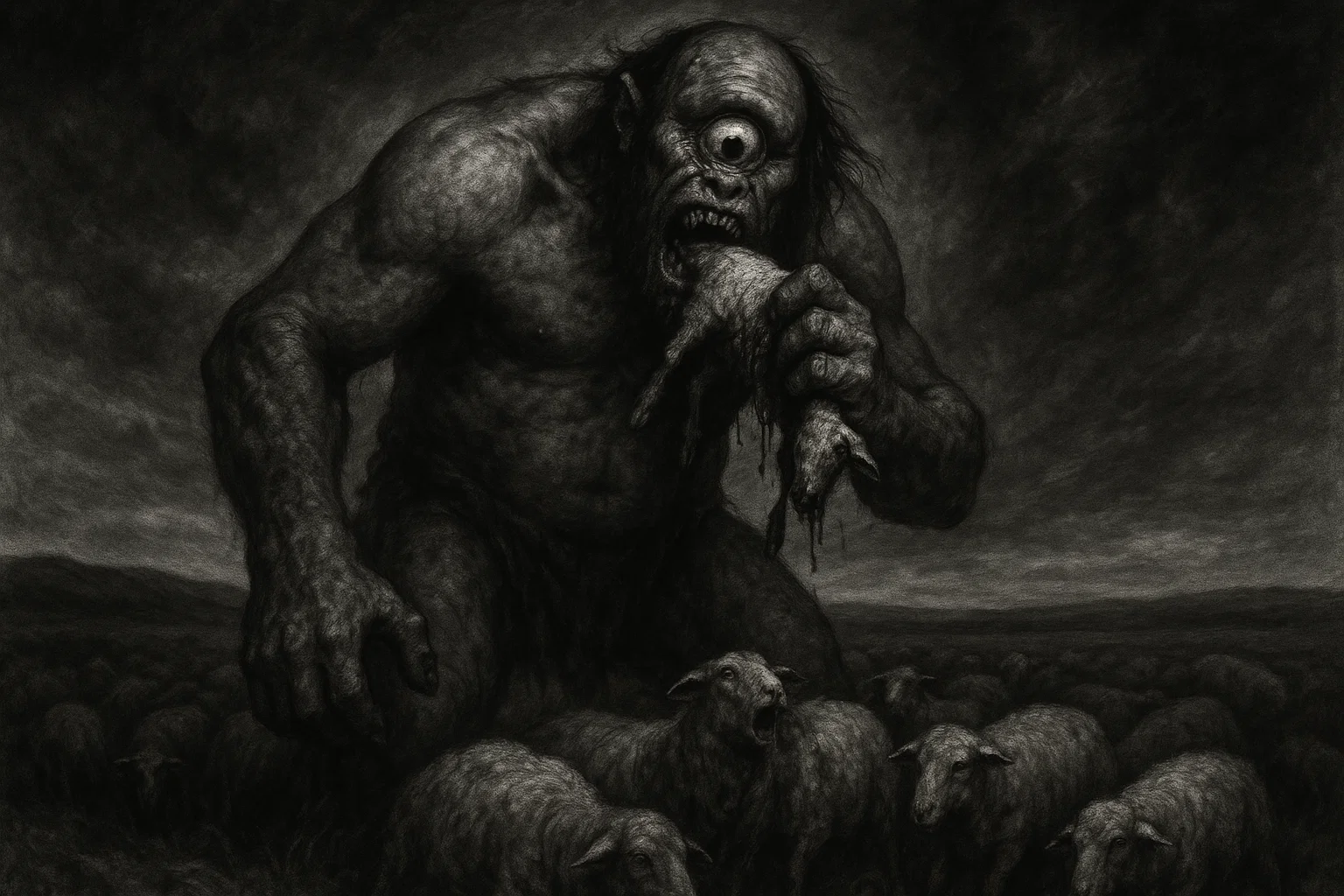Thiess of Kaltenbrun, known as the Livonian Werewolf, stands as a singular figure in the annals of 17th-century European folklore. An elderly farmhand from Swedish Livonia, he claimed to transform into a hound of God, battling witches and the Devil in Hell to safeguard crops and livestock.
His 1692 trial in Jürgensburg unveils a captivating blend of myth, faith, and law, distinguishing his story from the grim tales of lycanthropy that gripped the era.
Summary
Overview
| Aspect | Details |
|---|---|
| Name | Thiess of Kaltenbrun |
| Alias | Old Thiess, Livonian Werewolf |
| Nationality | Livonian (modern-day Latvia/Estonia) |
| Occupation | Farmhand, faith healer |
| Claim | Transformed into a werewolf to fight witches in Hell, protecting harvests |
| Trial Year | 1692 |
| Sentence | 20 lashes, lifelong banishment for heresy |
| Historical Significance | Benevolent werewolf claim; reflects possible shamanic traditions |
Who Was Thiess of Kaltenbrun?
Thiess of Kaltenbrun was an octogenarian farmhand residing in the rural outskirts of Jürgensburg, in Swedish Livonia, a region encompassing parts of modern Latvia and Estonia. Born around 1600, he lived a modest life, toiling on local estates and tending to livestock.
Known as Old Thiess among villagers, he was a wiry, weathered man with a reputation for folk healing, using charms and incantations to cure ailments in humans and animals.
His literacy was limited, typical of peasants in the era, but his knowledge of local traditions and oral storytelling made him a respected, if eccentric, figure.
Thiess’s community viewed him with a mix of awe and suspicion. His healing practices, rooted in a blend of Christian prayers and pre-Christian rituals, included reciting blessings over blessed salt dissolved in warm beer to restore health to sick cattle.
He claimed to have learned these skills from his father, a healer in Kaltenbrun, and passed them to select apprentices. By his later years, Thiess had become a local legend, with tales of his supernatural feats circulating among peasants.
His earlier legal disputes, including a 1681 accusation against a farmer for witchcraft, cemented his notoriety as a man unafraid to challenge authority with his unorthodox beliefs.
You May Also Like: The Crying Boy Painting Curse: Coincidence or Evil?
Thiess of Kaltenbrun’s Story
Early Life and Background
Thiess of Kaltenbrun’s early years are sparsely documented, as peasant records from 17th-century Livonia are scarce. Born in the hamlet of Kaltenbrun around 1600, he grew up in a peasant family under the feudal system of Swedish Livonia.
His father, a tenant farmer and healer, taught him the rudiments of folk magic, including charms to protect livestock from disease and evil spirits.
As a young man, Thiess worked as a farmhand, moving between estates in the Jürgensburg region, where he honed his reputation as a healer. By his 30s, he had married a woman named Annika, with whom he had at least two children, though both predeceased him by 1692.
Thiess’s life was marked by hardship typical of Livonian peasants: grueling labor, famine risks, and the constant threat of disease. Yet, his charisma and healing skills earned him a following.
Villagers sought him for remedies against ailments like fever, lameness in cattle, and suspected bewitchment. His methods included reciting incantations, such as: “Sun and moon traverse the sea, fetch the soul stolen by the Devil, and restore life to the afflicted.”
He accepted modest payments—grain, cloth, or a hen—making him a vital figure in a community with little access to formal medicine.
Alleged Werewolf Transformation
By the 1680s, Thiess openly claimed to be a werewolf, a revelation that stunned his neighbors. Unlike the malevolent werewolves of European lore, he described himself as a hound of God, divinely tasked with protecting humanity.
He recounted becoming a werewolf after a man named Skeistan, a reputed sorcerer, toasted him with a charmed drink in 1670. Thiess said he could pass this ability by breathing into a jug three times during a similar toast, though he named no successors.
He described transforming on three sacred nights—St. Lucia’s Day (December 13), Pentecost, and Midsummer’s Night (June 23)—by undressing in a secluded grove or donning a wolf pelt.
In wolf form, he and other werewolves traveled to a place he called Hell, located near Lemburg, a half-mile from the estate of the court chairman, Herman Georg von Trautvetter.
There, they battled witches and the Devil, wielding iron rods to reclaim stolen grain, livestock, and fruits. These battles, he insisted, ensured bountiful harvests and protected the community from famine.
Alleged Crimes and Accusations
Unlike most werewolf cases, Thiess was not accused of violent crimes like murder or cannibalism. His “crimes” were ideological, centered on his heretical claims and unorthodox practices.
However, rumors and accusations swirled around his supernatural activities, fueled by his 1681 court appearance. In that case, Thiess accused a farmer, Jurgen Hansen from Lemburg, of being a witch who broke his nose during a battle in Hell.
He claimed Hansen stole grain to deliver to Satan, and Thiess intervened to retrieve it. The court, presided by Bengt Johan Ackerstaff, dismissed the case, noting Thiess’s injury—a visibly swollen nose—but ridiculing his fantastical tale.
The 1681 incident sparked suspicion among local authorities and clergy. The pastor of Jürgensburg, Magister Johann Bucholtz, warned villagers against consulting Thiess, labeling his healing practices as pagan sorcery. By 1691, whispers of his werewolf claims reached the ears of the provincial court.
Witnesses, including a tenant farmer named Gurrian Matson, reported hearing Thiess boast of his nocturnal battles, claiming he led a pack of werewolves to thwart witches’ schemes.
Another villager, Marika Toom, testified that Thiess cured her cow but spoke of “running as a wolf” to protect her fields from blight.
No specific victims were named in Thiess’s case, as his alleged actions caused no physical harm.
Instead, the accusations focused on his blasphemy and heresy. The authorities, alarmed by his influence, feared his tales undermined Christian doctrine.
In late 1691, during a church robbery investigation involving a suspect named Pirsen Tönniss, Thiess was summoned as a witness. His unsolicited admission of being a werewolf prompted the court to investigate him as a heretic, setting the stage for his trial.
You May Also Like: New Mokele-Mbembe Sightings, Theories & Evidence
Community and Authority Reaction
The community’s reaction to Thiess was polarized. Many peasants revered him as a folk saint, crediting his charms with saving crops and livestock.
Others, swayed by the Church, viewed him with fear, suspecting his powers stemmed from a diabolical pact. The authorities, including the Livonian governor’s office, saw Thiess as a threat to social order.
Witch-hunts were waning in Sweden by the 1690s, but Livonia’s rural courts remained vigilant against perceived threats to Christianity.
No formal hunt was organized to apprehend Thiess, as he was a known figure who lived openly. Instead, his arrest in early 1692 followed his court appearance as a witness.
The bailiff of Jürgensburg, Lars Eriksson, detained him after he repeated his werewolf claims under oath. The court’s initial reaction was one of incredulity, but the judges, steeped in local folklore, recognized the gravity of his assertions.
They ordered a thorough investigation, summoning witnesses to verify his reputation and claims.
Thiess of Kaltenbrun’s Werewolf Trial
Capture and Imprisonment
In February 1692, Thiess was detained in Jürgensburg’s provincial jail, a damp stone structure near the court. The bailiff, Lars Eriksson, escorted him from his home in Kaltenbrun, where he lived alone after his wife’s death.
Thiess, frail at 80, offered no resistance, reportedly saying, “I speak only truth, as God wills.” His cell was small, with a straw pallet and iron bars, typical of Livonian jails. He was fed meager rations of rye bread and water, and his health deteriorated due to the cold and malnutrition.
During his imprisonment, Thiess was visited by Magister Bucholtz, who urged him to confess his sins and renounce his delusions. Thiess remained defiant, insisting his werewolf form served God.
The pastor noted his stubbornness in a letter to the court, describing him as “bewitched by his own fancies.” Guards reported Thiess praying aloud at night, reciting charms to protect himself from evil spirits, which further alarmed his captors.
Interrogation and Torture
The interrogation began in March 1692, overseen by judges Bengt Johan Ackerstaff and Herman Georg von Trautvetter. Thiess was questioned in the court’s main hall, a timbered room lit by torches.
The judges, aware of his age, initially avoided torture, hoping to extract a confession through verbal pressure. Thiess recounted his werewolf activities with vivid detail, describing how he transformed by shedding his clothes in a grove near Kaltenbrun.
He named Hell as a cavernous realm where witches hoarded stolen goods, and he claimed to have fought a witch named Liesma Vanags, who stole barley from a local estate.
Unsatisfied with his fantastical narrative, the court ordered mild torture on March 15, 1692. Thiess was stripped and bound to a wooden frame, where his feet were lashed with a leather whip.
The pain, though less severe than methods like the rack, caused him to cry out, but he refused to recant. He insisted, “I am no devil’s servant but God’s hound, saving the land from ruin.”
The judges, frustrated, escalated to thumb screws on March 20, tightening them until Thiess’s fingers swelled and bled. Still, he maintained his story, adding that his pack included eight other werewolves, though he named only one, a man called Matiss from Lemburg, who had died years earlier.
Witnesses were called to corroborate or refute Thiess’s claims. Gurrian Matson testified that Thiess cured his horse in 1689 and spoke of “running with wolves” to protect crops.
Marika Toom confirmed his healing abilities but expressed fear of his werewolf tales. A third witness, Jurgen Hansen, the farmer Thiess accused in 1681, denied any witchcraft, calling Thiess a “mad old fool.” The court found no evidence of physical crimes but deemed his beliefs heretical.
You May Also Like: The 1986 Kobe Middle School Murders | Horror Story
Trial Proceedings
The formal trial commenced on October 10, 1692, in Venden’s provincial court. Thiess, weakened by months in jail, was brought before a panel of three judges: Ackerstaff, Trautvetter, and a visiting magistrate, Nils Fredriksson. The courtroom was crowded with local peasants, clergy, and officials, eager to hear the case of the Livonian Werewolf.
Thiess, dressed in tattered linen, stood unassisted despite his frailty, his voice steady as he repeated his claims.
The prosecution, led by court scribe Peter Olafsson, argued that Thiess’s beliefs constituted blasphemy and sorcery, as they suggested a supernatural order outside God’s will.
They cited his healing practices and werewolf claims as evidence of a diabolical delusion that misled the faithful. Thiess’s defense, offered by a reluctant advocate named Sven Larsson, emphasized his lack of violent crimes and his age, pleading for leniency.
Thiess himself spoke at length, describing his battles in Hell as a divine mission to protect Livonia’s harvests. He claimed werewolves’ souls ascended to Heaven, while witches’ descended to Hell, a statement the judges found particularly offensive.
The trial lasted three days, with deliberations concluding on October 12. The judges consulted theological texts, including the Malleus Maleficarum, to frame Thiess’s actions as heretical.
They also considered local folklore, which included tales of benandanti-like figures who fought witches in spirit form, but dismissed these as pagan relics.
Sentence and Punishment
On October 31, 1692, Thiess was sentenced to 20 lashes and lifelong banishment from Swedish Livonia. The judges cited his “vexatious and highly forbidden misdeeds” and “diabolical delusions” as grounds for punishment.
Given his age, they spared him execution, a common fate in werewolf trials. The sentence was carried out the same day in Jürgensburg’s market square, before a crowd of villagers.
Thiess was stripped to the waist, revealing his emaciated frame, and tied to a wooden post. The executioner, a local blacksmith named Karl Vinters, administered the lashes with a knotted whip, drawing blood by the fifth stroke.
Thiess groaned but did not scream, muttering prayers between lashes. Witnesses reported that he collapsed after the 15th stroke, and the final five were delivered as he lay semiconscious. The crowd’s reaction was mixed: some jeered, calling him a sorcerer, while others wept, believing him a holy man.
After the flogging, Thiess was bandaged and given a day to recover before being escorted to Livonia’s border. On November 1, 1692, bailiff Lars Eriksson and two guards led him to the edge of Courland, where he was released with a warning never to return.
No records confirm his fate, but oral tradition suggests he died soon after, possibly in a Courland village, alone and destitute.
You May Also Like: The Portrait of Doña Isabel de Porcel Curse: Real or Not?
Thiess of Kaltenbrun vs Other Werewolves
| Case | Year | Location | Crimes | Outcome |
|---|---|---|---|---|
| Peter Stumpp | 1589 | Bedburg, Germany | Murdered 16, ate flesh | Beheaded, burned |
| Gilles Garnier | 1573 | Dole, France | Killed 4 children, cannibalism | Burned at stake |
| Jean Grenier | 1603 | Gascony, France | Attacked children | Monastery confinement |
| Gandillon Family | 1598 | St. Osythe, France | Murder, cannibalism | Pierre, Perrenette executed |
| Jacques Roulet | 1598 | Angers, France | Attacked children | Hospitalized |
| Hans | 1651 | Estonia | Witchcraft, lycanthropy | Executed |
| Vseslav of Polotsk | 1044–1101 | Polotsk, Belarus | None | None |
| Werewolf of Châlons | 1598 | Châlons, France | Murder, cannibalism | Executed |
| Paris Tailor | 1598 | Paris, France | Killed children, cannibalism | Burned |
Thiess’s benevolent claims contrast sharply with the malevolent accusations in most werewolf trials.
Cases like Peter Stumpp’s involved gruesome confessions extracted under torture, while Thiess’s narrative aligned with protective folklore, possibly linked to Livonian shamanic traditions. His lack of violent crimes and focus on agricultural prosperity make his case unique.
Was Thiess of Kaltenbrun Real?
The historical existence of Thiess of Kaltenbrun is confirmed by the trial transcript, preserved in the Hofger-Archiv Kriminalakte n. 30 v. J. 1692, housed in the Livonian provincial archives.
This document, written in German, details Thiess’s testimony, witness statements, and the court’s verdict.
It was first published in 1924 by historian Hermann von Bruiningk in Mitteilungen aus der livländischen Geschichte, providing a primary source for scholars. Bruce Lincoln translated the transcript in 1980, making it accessible to English-speaking researchers in his article “The Werewolf of Livonia.”
Additional references to Thiess appear in 17th-century ecclesiastical records. A 1691 letter from Magister Johann Bucholtz to the Bishop of Riga mentions Thiess as a “healer of Kaltenbrun” suspected of pagan practices.
The court scribe Peter Olafsson’s journal, dated 1692, notes Thiess’s trial as a “curious case of an old man’s delusions.” These sources corroborate the trial’s occurrence and Thiess’s reputation as a healer and werewolf claimant.
Historians like Carlo Ginzburg, in The Night Battles (1966), analyzed Thiess’s case alongside the benandanti of Friuli, Italy, who claimed to fight witches in spirit form to protect crops.
Ginzburg argued that Thiess’s beliefs were a Christianized remnant of pre-Christian shamanic traditions, where individuals entered trance states to battle supernatural foes. However, Willem de Blécourt, in Tales of Witchcraft and Wonder (2004), cautioned against overgeneralizing these parallels, suggesting Thiess’s claims were unique to Livonian folklore.
Hans Peter Duerr’s Dreamtime (1978) linked Thiess to broader European myths of wild hunts, where spectral warriors protected the land.
The accuracy of Thiess’s claims is doubtful. No evidence supports physical transformation into a wolf, and his descriptions of Hell resemble Livonian folktales about underworld realms guarded by spirits.
His battles likely reflected symbolic narratives rooted in local beliefs about fertility and chaos. The trial transcript, while reliable for legal proceedings, contains no proof of supernatural events, suggesting Thiess’s story was a product of cultural imagination rather than fact.
Conclusion
Thiess of Kaltenbrun’s tale is a vivid tapestry of history and myth, revealing the complexities of 17th-century Livonian society.
His claim to be a hound of God, fighting witches to protect harvests, defies the grim stereotypes of werewolf lore, offering a rare glimpse into benevolent folklore.
His 1692 trial, marked by ideological conflict rather than bloodshed, underscores the tension between Christian orthodoxy and lingering pagan traditions.
Whether a shamanic visionary, a delusional elder, or a master storyteller, Thiess’s legacy endures as a testament to the power of belief. His story invites us to explore the boundaries of human and supernatural, where folklore once shaped the reality of a rural world.

